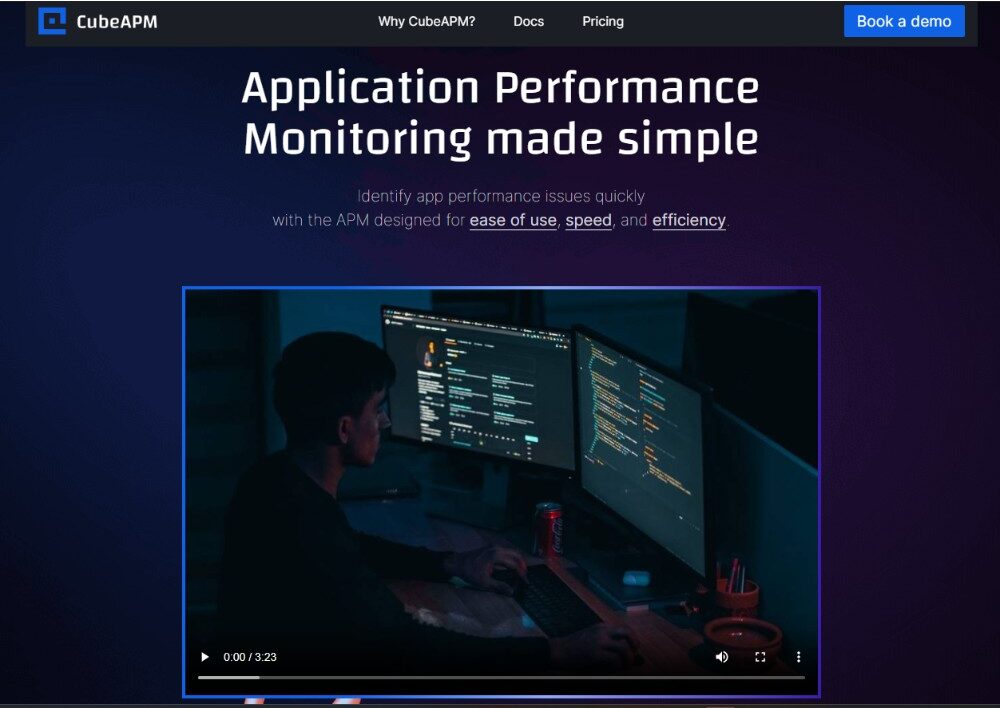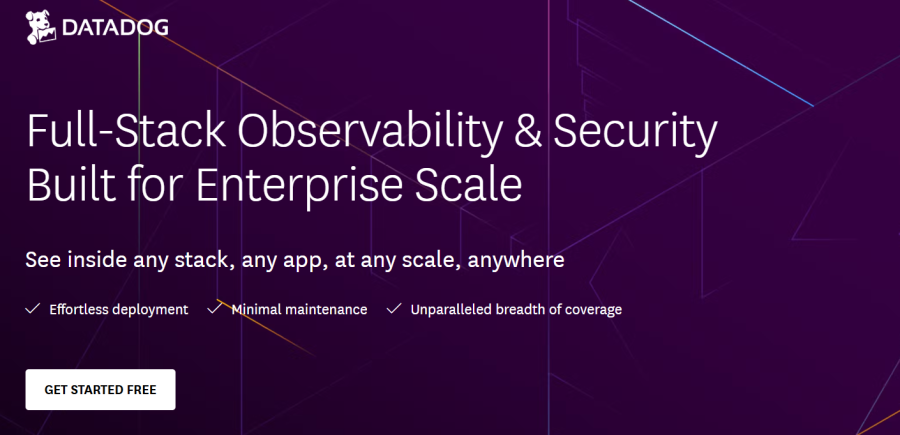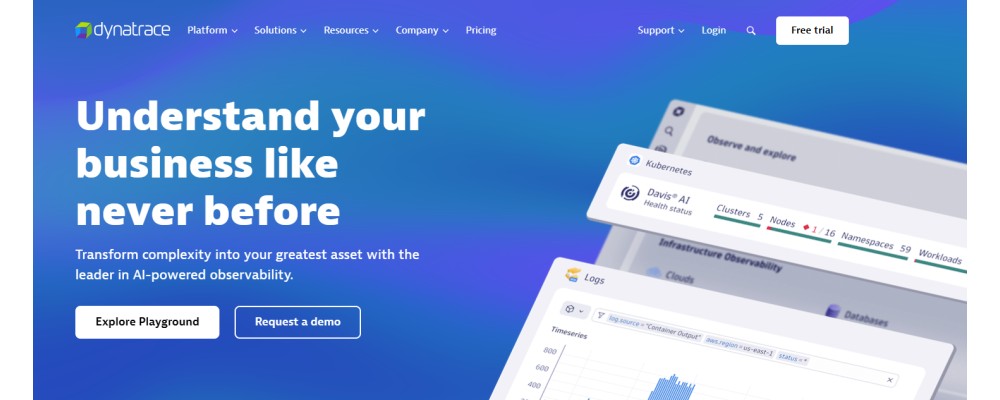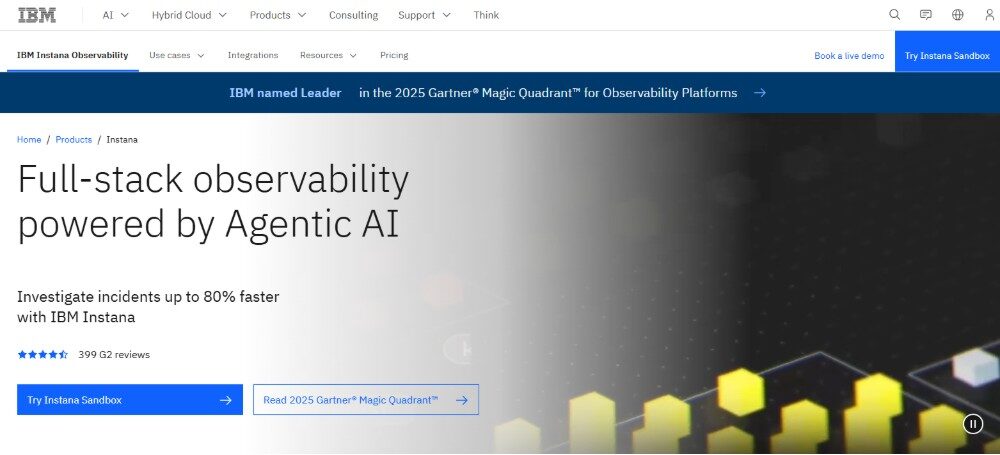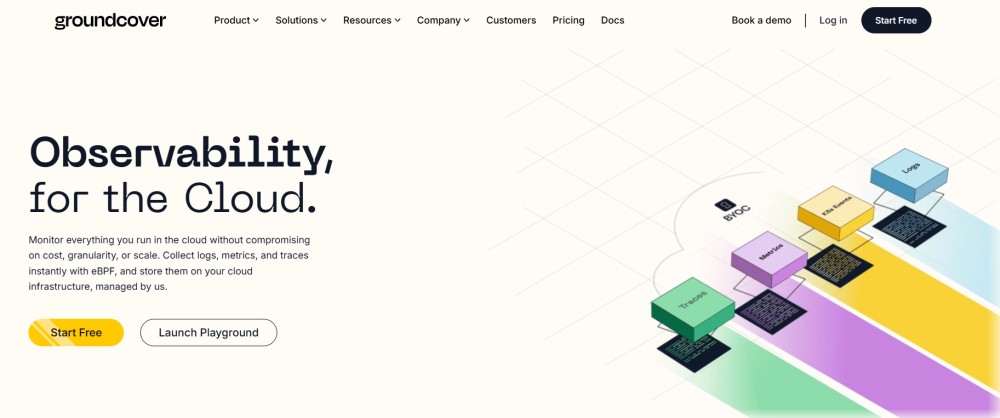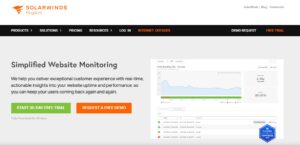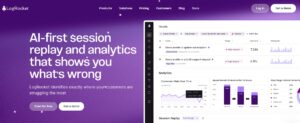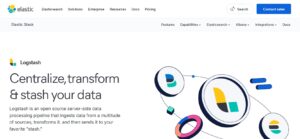Dash0 is an OpenTelemetry-native observability platform that unifies logs, metrics, and traces on open standards—OTLP, PromQL, and Perses—and adds cost-controls like one-click Spam Filters and the SIFT framework to drop low-value telemetry before storage. Interest in OTel is surging: 41% use it in production and ~38% are evaluating/POC, per a 2025 survey.
Users still explore alternatives due to a few practical gaps: still developing the feature set and limited customization options. Select capabilities are still marked “soon” (e.g., Web Events, Synthetic API Check Runs), and a smaller integrations catalog (~50+) than incumbent marketplaces.
CubeAPM is the best Dash0 alternative with full MELT, OTel-based ingestion, and smart sampling to cut noise and spend. It also offers self-hosting/BYOC for data residency, predictable pricing, and direct Slack/WhatsApp support for minutes-level TAT.
In this article, we’ll cover top Dash0 alternatives based on vendor docs, independent reviews, and real pricing models.
Table of Contents
ToggleTop 8 Dash0 Alternatives
- CubeAPM
- Datadog
- New Relic
- Dynatrace
- Grafana
- SigNoz
- IBM Instana Observability
- groundcover
Why are people looking for Dash0 alternatives
Deployment & data-residency requirements (BYOC/on-prem)
Many regulated teams need to keep telemetry inside their own cloud or data center. Dash0’s public materials emphasize a managed cloud service with a free trial and usage-based billing; there’s no publicly documented self-hosted/on-prem SKU. If residency or sovereign controls are non-negotiable, buyers typically evaluate platforms that explicitly support private cloud or on-prem.
Feature rollout timing (RUM & Synthetics)
Dash0 has recently included Synthetic Monitoring and RUM. However, its pricing page still indicates that these features are not yet active and that they will activate them “soon”. So, enterprises should confirm GA status and billing before planning SLAs or cost models around these modules.
Full MELT scope & depth vs. incumbents
Dash0’s OTel-native core, PromQL compatibility, Perses dashboards, and cost controls (Spam Filters, SIFT) are strong, but some buyers need long-standing breadth in areas like RUM/synthetics packages, SLOs, AIOps, or a very large integration marketplace—areas where incumbents often have multi-year head starts. Shortlists on review sites frequently pit Dash0 against Datadog/Dynatrace/New Relic for this reason. (G2)
Pricing model fit (signals-based vs. volume-based)
Dash0 prices by count of signals—$0.20/million metrics, $0.60/million spans, and $0.60/million logs. It offers default retention of 13 months in case of metrics and 30 days in case of logs and spans. Many teams like this transparency; others budget by GB ingested or combine ingest-filters and adaptive trace sampling to tune spend, so they compare TCO across models.
Illustrative mid-size pricing example (10 TB)
Dash0 (events-based)
Dash0 charges per million items: $0.20/M metric data points, $0.60/M spans, $0.60/M log records (13-month metrics retention; 30-day logs/spans). Exact cost depends on your mix and the byte size of each item.
Below are three realistic telemetry mixes converting 10 TB to item counts using industry baselines:
- Log size = approx 1 KB
- Span = approx 800 B (compressed Protobuf at ingest)
- Metrics = approx 2 B (Prometheus storage guidance; shows why high-cardinality metrics explode counts)
- A) Logs-heavy (80% logs / 15% spans / 5% metrics)
10 TB → ~8,796 M log records + 2,061 M spans + 274,878 M metric points
Cost = (8,796×$0.60) + (2,061×$0.60) + (274,878×$0.20 per 1,000 M) ≈ $61,490 / mo. - B) Tracing-heavy (50% logs / 40% spans / 10% metrics)
10 TB → ~5,498 M logs + 5,498 M spans + 549,756 M metric points
Cost ≈ $116,548 / mo. - C) Mostly logs + a little tracing (95% logs / 5% spans / 0% metrics)
10 TB → ~10,445 M logs + 687 M spans
Cost ≈ $6,680 / mo.
CubeAPM (volume-based)
Assume binary TB: 10 TB = 10,240 GB
- Ingest: 10,240 GB × $0.15/GB = $1,536
- Total ≈ $1,536/month.
What this shows:
- Under per-item pricing, Dash0 can range from ~$6.7k (no metrics) to >$60k when even 5–10% of your 10 TB is metrics, because per-data-point costs multiply rapidly with high-cardinality/time-series data.
Dash0’s signal-count model is simple and can be attractive at lower volumes; teams with log/trace-heavy workloads or strict residency needs often compare it with a BYOC/self-hostable, OTel-first alternative that pairs ingest-filters with adaptive sampling for predictable spend.
Sampling strategy preferences
Dash0’s one-click Spam Filters and the SIFT framework remove low-value telemetry pre-storage and improve signal quality—great for cutting noise. Teams that specifically want adaptive/impact-aware trace sampling (keep errors/latency outliers while shrinking the rest) may prioritize vendors that make this a first-class control in addition to ingest filtering.
Criteria for selecting Dash0 alternatives
Native OpenTelemetry (OTLP) & Prometheus/PromQL
Prioritize platforms that ingest OpenTelemetry signals natively without proprietary agents or query languages. You should be able to keep your existing collectors and semantic conventions, and reuse PromQL for dashboards and alerts. Confirm that traces, logs, and metrics flow end-to-end with minimal translation. If you’re migrating from Datadog/New Relic exporters, look for smooth compatibility to avoid heavy rewrites.
Full MELT coverage & real GA status
Choose tools that truly unite Metrics, Events, Logs, and Traces—and also cover RUM, synthetics, and error tracking when those matter to you. Don’t assume feature pages equal general availability; verify what’s GA today and how it’s packaged and priced. Correlation should be first-class so you can jump from an alert to traces, related logs, and service metrics in one path. Favor platforms that ship practical SLO/SLI workflows rather than just charts.
Deployment options and data residency
Decide early whether you need pure SaaS, self-hosted, or BYOC in your own VPC for compliance or cost control. Confirm encryption, region selection, retention controls, and auditability before you ingest a byte. For Kubernetes, check support for your managed flavor and how agents/operators are deployed and upgraded. Strong SSO/SAML and granular RBAC are table stakes in regulated environments.
Pricing model and predictability
Map your real telemetry shape to each vendor’s unit—per-GB, per-event, per-host, or a blend—and model peaks, not just averages. Enquire the provider about log indexing vs ingestion, cold storage, and rehydration. Insist on line-item visibility and near-real-time cost dashboards so engineers can course-correct during incidents. A quick spreadsheet with your volumes often reveals the most economical model for your team.
Sampling and data-hygiene controls
Look for adaptive sampling that keeps 100% of errors and slow paths while downsampling routine successes. Pair that with ingest filters, drop rules, and field redaction to cut waste and reduce risk at the door. You should be able to test policies safely before enforcing them across clusters. Tiered retention by signal (hot/warm/cold) keeps performance high without ballooning storage.
Automation, AI, and RCA speed
Favor platforms that auto-discover services, build topology maps, and surface anomalies with context. AI-assisted triage should connect symptoms to probable root causes and recommended actions, not just produce summaries. This helps lower alert fatigue and accelerate incident detection. Measure impact on MTTD/MTTR using your own past incidents or game days.
Integrations and migration friction
Inventory the clouds, data stores, queues, serverless runtimes, and CI/CD you rely on, then verify native connectors or stable exporters. Plan a phased cutover with dual-shipping, and check that dashboards, labels, and alerts won’t need complete rewrites. Treat pipelines, such as Fluent Bit, Otel collector, and Vector, as first-class citizens. The goal is to switch tools without disrupting developer workflows.
Support quality and SLAs
During outages, you need humans, fast. Prefer vendors that offer real-time channels (e.g., Slack) with engineers, plus clear response-time commitments. Strong onboarding—dashboards, SLO templates, data-hygiene workshops—shortens time-to-value. Roadmap transparency and a track record of shipping requested fixes matter as much as the feature list.
Dash0 Overview
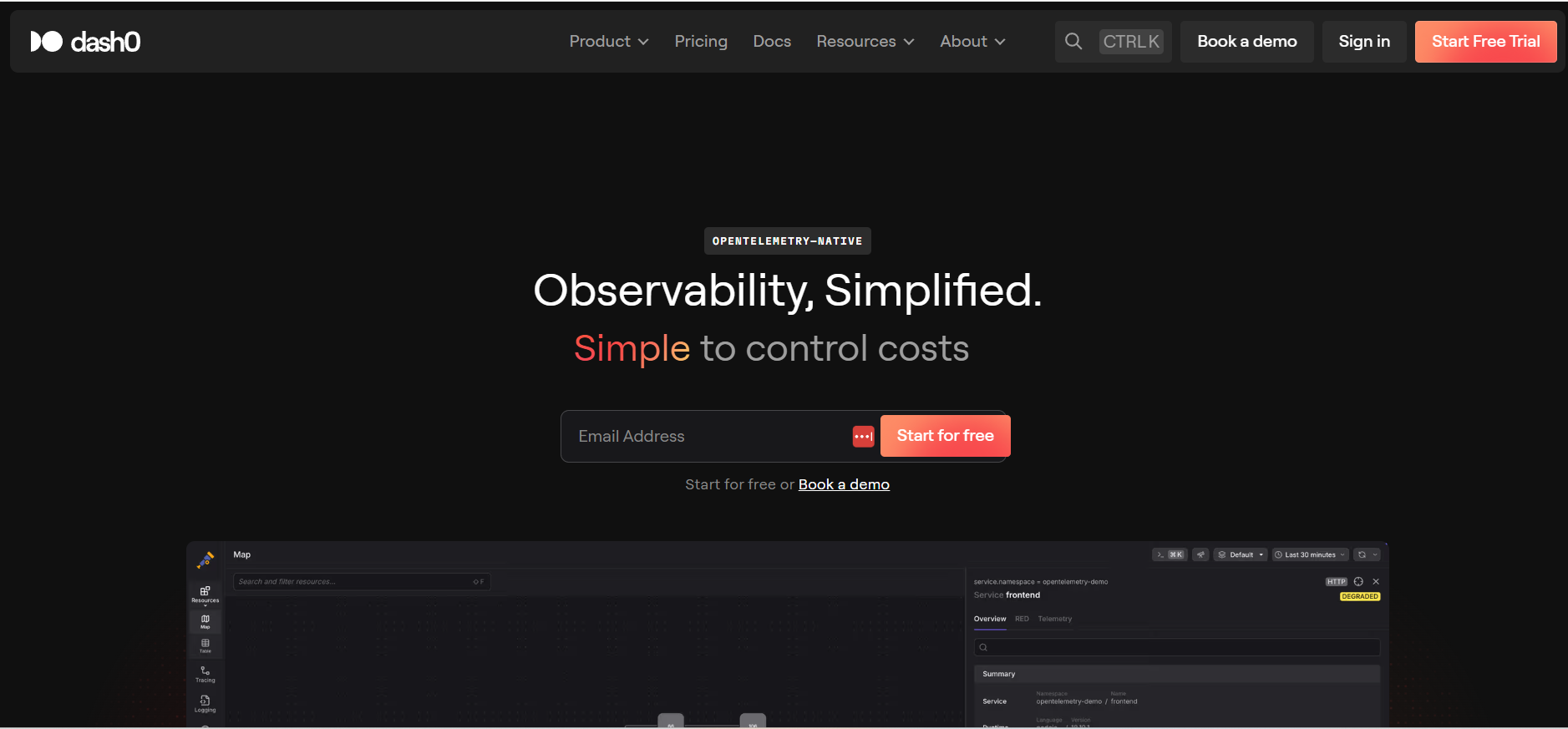
Dash0 is an OpenTelemetry-native observability platform that unifies logs, metrics, traces, dashboards, and alerting on open standards such as OTLP, PromQL, and Perses. It emphasizes developer-friendly workflows (resource-centric views, service maps, triage) and aggressive cost-control at ingest via Spam Filters and the SIFT framework, which drop low-value telemetry before storage while enriching useful data. Dash0 now also markets Website Monitoring (RUM-style sessions & web vitals) and Synthetic Monitoring for proactive API/endpoint checks.
Known for
An OTel-first stack with transparent, per-item pricing (per million log records, spans, and metric data points) and point-and-click ingest filtering that aligns cost to signal quality rather than raw GB.
Standout Features
- Spam Filters & SIFT: One-click rules to drop noisy successes (e.g., health checks) and auto-improve telemetry quality; executed in Dash0’s ingestion pipeline before billing.
- Resource-centric troubleshooting: Service/resource maps, triage flows, and fast pivoting across traces, related logs, and metrics for developer workflows.
- Website & Synthetic Monitoring: Real-user sessions, core web vitals, errors, and global synthetic checks to catch issues before users do. (Pricing page still labels “Web Events” and some “Synthetic API Check Runs” as soon.)
Key Features
- Open standards: The tool supports native OTel native, Perses visualization, and PromQL dashboards
- Unified MELT signals: Logs, metrics, and traces integrated with dashboards, alerting, and correlations; RUM-style website monitoring and synthetics are available via new product/docs.
- Kubernetes-first onboarding: A Dash0 Kubernetes Operator for fast cluster shipping; note that GKE Autopilot is not supported by the operator (use OTel Operator there).
- Transparent pricing: Per-million pricing with default retentions (metrics 13 months; logs & spans 30 days).
Pros
- OTel-native design; no proprietary agents or query language lock-in
- Intuitive developer UX with fast trace-first pivots to logs/metrics
- Ingest-time filtering to lower noise and spend
- Clear, per-item pricing visible on the public pricing page
- Active product velocity; recent RUM and synthetics launches/docs
Cons
- No publicly documented self-hosted/on-prem SKU; cloud-delivered service
- Pricing table still shows “Web Events” and some “Synthetic API Check Runs” as soon; confirm packaging/GA
- Operator not supported on GKE Autopilot; requires alternative setup
- Smaller ecosystem than long-standing incumbents; reviewers note “still pretty new” and learning curve for some teams
Best for
Teams going all-in on OpenTelemetry who want portable queries (PromQL), fast developer-centric troubleshooting, and cost control at ingest. Dash0 particularly suits cloud-native orgs standardizing on OTel/Prometheus that prefer per-item pricing and point-and-click filtering, and can run fully in a managed cloud (no on-prem requirement).
Dash0 Pricing & Customer Reviews
- Pricing: Metric: $0.20/million (13-month retention), spans: $0.60/million (30-day retention), Log records: $0.60/million (30-day retention), Web Events (soon) $0.60/million, Synthetic API Check Runs (soon): $0.20/thousand
- G2 rating: 4.8/5 (24 reviews)
- Praised for: Responsive support; intuitive, developer-first UI; quick onboarding; OTel-native correlations; transparent pricing
- Criticized for: Feature depth still maturing vs. incumbents; some modules in rollout; learning curve for users coming from other tools; potential scaling costs depending on event volumes
Top 8 Dash0 Alternatives
1. CubeAPM
Known for
An OpenTelemetry-first observability platform with full-stack MELT (APM, infra, logs, traces, RUM, synthetics, error tracking), self-hosting/BYOC for strict data control, flat $0.15/GB usage pricing, and 800+ integrations so teams can plug in existing agents and pipelines without rewrites. It’s explicitly designed to run on your infrastructure with no traces/logs leaving your cloud, and uses AI-assisted/tail-aware sampling to keep critical data while trimming noise.
Standout Features
- AI/tail-aware sampling: Preserves errors and slow paths while down-sampling routine successes to reduce trace volume and compute/storage without losing insight.
- On-prem/BYOC by default: Deploy entirely in your VPC or datacenter so telemetry never traverses vendor networks, eliminating egress and simplifying compliance.
- 800+ integrations with OTel compatibility: Works with OpenTelemetry, Prometheus, Datadog/New Relic exporters, CI/CD, and alerting tools to accelerate migration and correlation.
Key Features
- Full MELT coverage: APM, infrastructure monitoring, log management, distributed tracing, real-user monitoring, synthetic checks, and error tracking—correlated for one-click root-cause paths across services, spans, logs, and metrics.
- Prometheus/OTel native ingest: Keep your collectors and PromQL; ingest exemplars, RED/SLO metrics, and span attributes without proprietary DSLs or agents.
- Context-rich alerting: Alert on any span/metric/log combination, route to Slack/PagerDuty/email, and pivot directly into trace and log evidence for faster MTTR.
- Predictable pricing: “Ingest everything, search anything” at $0.15/GB with usage-based billing and no nickel-and-diming on add-ons.
Pros
- Predictable $0.15/GB pricing with cost controls built into ingest and sampling
- Self-hosting and BYOC options for data residency, sovereignty, and zero egress
- High-fidelity tracing with smart sampling to shrink noise without losing critical signals
- 800+ integrations and OpenTelemetry/Prometheus compatibility for quick migrations
- Context-rich alerting and service-level views that shorten time to root cause
Cons
- Less suitable for teams that require a vendor-hosted, off-prem (SaaS-only) deployment
- Focused on observability only; does not include cloud security management capabilities
Best for
Teams standardizing on OpenTelemetry/Prometheus that need on-prem/BYOC control, line-item-clean $0.15/GB economics at 10 TB-scale, and correlated MELT workflows (APM ↔ infra ↔ logs ↔ traces ↔ RUM/synthetics) without rebuilding their pipelines. It’s a strong fit for regulated industries, data-sovereign deployments, and organizations exiting per-host or per-event billing for predictable usage pricing.
CubeAPM Pricing & Customer Reviews
- Pricing: $0.15/GB flat rate with no extra charges
- Rating: 4.7/5
- Praised for: Transparent pricing, quick rollout with existing OTel/Prometheus, responsive Slack/WhatsApp-style support, and end-to-end correlation
CubeAPM vs Dash0
Both are OTel-centric and developer-friendly. Dash0 has per-item pricing, and its sampling is based on ingest-time Spam Filters/SIFT. On the other hand, CubeAPM’s deployment model is self-hosting/BYOC and offers smart sampling with predictable pricing. If you need on-prem data residency, broad MELT with 800+ integrations, and trace-first cost control without losing fidelity, CubeAPM is the stronger Dash0 alternative.
2. Datadog
Known for
A broad, SaaS-based observability and security platform with 900+ integrations, spanning infrastructure, APM, logs, RUM, synthetics, error tracking, profiling, and more—plus AIOps features like Watchdog and Bits AI that correlate signals and surface anomalies. Datadog also offers adjacent modules (e.g., cloud security, SIEM, cost management) that plug into the same UI, making it a common “one console” choice for large cloud estates.
Standout Features
- AIOps (Watchdog & Bits AI): Automatic anomaly detection, correlation across metrics/logs/traces, and AI-assisted investigations to reduce alert noise and accelerate triage.
- Universal Service Monitoring & Continuous Profiler: Code-level visibility and service maps without heavy manual setup; continuous profiling ties hot code paths to slow transactions and errors.
- Digital Experience (RUM + Session Replay + Synthetics): Frontend and mobile RUM, replay for user sessions, and API/browser tests for proactive checks—all linked back to backends via tracing.
Key Features
- Infrastructure monitoring: Host, container, serverless, and network visibility with tag-based analytics and out-of-the-box dashboards; 900+ vendor-backed integrations.
- APM & distributed tracing: End-to-end traces, latency/error analytics, service maps, code profiling, and data streams monitoring for queue/stream topologies.
- Log management: Ingest pipelines, on-demand indexing windows, tiered retention (indexed vs. Flex Logs), and forwarding to custom destinations.
- RUM: Web and mobile session telemetry, Core Web Vitals, crashes, resource timing, and funnel analysis; optional Session Replay.
- Synthetics & error tracking: API and browser tests at scale, plus error aggregation with thresholds and workflows that tie into incidents.
Pros
- Very wide product surface and 900+ integrations across clouds and runtimes
- Mature APM, logs, RUM, synthetics, and profiling with strong cross-linking
- AIOps lowers noise and helps with regressions
- Consolidated workflows: incidents, SLOs, and security products in the same UI
Cons
- Pricing is modular and complex; multiple meters (hosts, sessions, GB, indexed spans/logs) can compound at scale
- Learning curve for first-time users, and the initial setup can be time-consuming in large estates
- Host and device counts use “high-water mark” style billing in some products, which can surprise teams during spikes
Best for
Enterprises or fast-growing mid-market teams that want a single SaaS platform to standardize observability (and optionally security) across multi-cloud and Kubernetes at scale. Datadog’s breadth, AIOps, and extensive integrations make it a strong fit when you need deep coverage across many stacks and are comfortable modeling spend across several billing units.
Datadog Pricing & Customer Reviews
- Pricing: infra: $15/host/month (annual); APM: $31/host/month (annual); Logs: $0.10/GB ingest; RUM & Session Replay: billed per 1,000 sessions.
- G2 rating: 4.4/5 (observability category page snapshot, mid-2025)
- Praised for: Breadth of features and integrations; strong real-time analytics; unified workflows
- Criticized for: Cost complexity at scale; steep learning curve in larger deployments; variable support experience by tier
Datadog vs Dash0
Both platforms cover MELT + DX (APM/logs/metrics with RUM and synthetics). Datadog brings a far broader product surface (900+ integrations, AIOps, security modules) and is a fit when you want one vendor for observability and security. Dash0 is OTel-first with transparent per-item pricing and heavy ingest filtering, which some teams prefer for cost control and an open-standards workflow. If you need maximum breadth and are okay with modeling multiple meters, Datadog wins; if you want a lean OTel-native stack with simpler pricing, Dash0 is compelling.
3. New Relic
Known for
A unified, usage-based observability platform that rolls APM, infrastructure, logs, RUM/mobile, synthetics, error tracking, dashboards, alerts, and AIOps into one UI—with OpenTelemetry support, 780+ integrations, and modern additions like eAPM (no-code, eBPF-based instrumentation for K8s apps). Pricing combines 100 GB free ingest/month and a per-GB rate beyond that, plus user tiers (basic/core/full platform) or an optional compute model.
Standout Features
- eAPM no-code instrumentation: Drop in an eBPF agent for Kubernetes to auto-discover apps and start APM without code changes
- Transaction 360 & APM 360: Trace business-critical transactions end-to-end and pivot from code to infra, logs, and errors in a few clicks
- Pathpoint (business journeys): Map user flows and SLOs to dollars and revenue risk so engineering can prioritize by business impact
Key Features
- APM & distributed tracing: Code-level visibility, golden metrics, service maps, and deep root-cause pivots across your stack
- Infrastructure & K8s monitoring: Hosts, containers, cloud services, networks, and managed K8s with curated dashboards and alerts
- Log management: Centralized pipelines, querying, and retention controls tied back to APM entities and incidents
- RUM & Mobile RUM: Core Web Vitals, crashes, resource timing, funnels, and session replay to connect UX to backend health
- Synthetics: API/browser tests at scale with configurable locations and alerting, correlated to traces and errors
- OpenTelemetry & integrations: Ingest via OTel or New Relic agents; 780+ integrations and quickstarts to speed setup
Pros
- Broad, mature feature set across APM, infra, logs, RUM, synthetics, and error tracking
- eAPM shortens time-to-value by auto-instrumenting K8s apps
- Strong dashboards/visualizations and cross-signal pivots for faster RCA
- OTel support plus 780+ integrations reduces migration friction
- Business-level views (Pathpoint) tie incidents to customer and revenue impact
Cons
- Usage model mixes data ingest with user or compute options; costs can rise with high volumes or many full-platform users
- Initial configuration and learning curve can be significant in large estates
- Advanced capabilities (e.g., Data Plus) add another pricing dimension to evaluate
Best for
Engineering orgs that want one platform to cover MELT and digital experience—especially teams standardizing on OpenTelemetry but wanting the convenience of New Relic agents, Kubernetes/eBPF auto-instrumentation, and strong dashboarding. If you need to connect uptime and latency directly to business journeys and SLOs, Pathpoint makes New Relic a compelling fit.
New Relic Pricing & Customer Reviews
- Pricing: 100 GB/month free, paid: starts $0.40/GB; core starts $49/user
- G2 rating: ~4.4/5 (observability/APM category snapshot, 2025)
- Praised for: Unified platform depth; customizable dashboards; strong end-to-end correlation across signals
- Criticized for: Pricing complexity/expensiveness at scale; setup/learning curve in larger environments
New Relic vs Dash0
Both are OTel-friendly and cover MELT plus digital experience. New Relic offers a broader, long-matured suite—APM 360, eAPM, Pathpoint, and deep integrations—along with flexible user/compute pricing. Dash0 emphasizes an OTel-native, developer-centric experience with transparent per-item billing and powerful ingest filters. If you want an all-in-one platform with advanced APM and business-journey views, New Relic takes the edge; if simplicity and per-event transparency are top priorities, Dash0 remains attractive.
4. Dynatrace
Known for
An AI-driven, enterprise observability platform built around Davis AI and the Grail data lakehouse, unifying application and infrastructure telemetry with digital experience, logs, and business analytics in one place. Dynatrace leans hard into automation—auto-discovery, baselining, causal analysis—and ties insights to workflows for teams that run at hybrid or multi-cloud scale.
Standout Features
- Davis AI: Dynatrace precisely correlates metrics, logs, traces, topology, and business data. It helps you understand problems and decide your next move.
- Grail data lakehouse: Stores and analyzes observability, security, and business data in context for fast, at-scale analytics and precise automation.
- Digital Experience: offers RUM and synthetic tests to improve user experience.
Key Features
- Application observability: OneAgent auto-instrumentation, distributed tracing, service maps, continuous profiling, and OpenTelemetry support for cloud-native workloads.
- Infrastructure observability: Hosts, containers, Kubernetes, networks, and cloud services with topology (Smartscape) and automated baselines.
- Log management & analytics: Central ingestion and analysis in Grail with query, retention, and correlation back to services and users.
- Business analytics: shows technical signals and connects them to KPIs and user journeys to measure impact on incident and performance.
Pros
- Deep automation and AI (Davis) reduce triage time at a large scale
- Grail to improve cross-signal context and queries
- Broad MELT + DX coverage with strong auto-discovery and baselining
- Private synthetic locations and modernized RUM experience options
Cons
- Pricing can feel premium and multi-dimensional (host hours, rate card/DPS) for smaller teams
- Feature depth and automation create a learning curve for new users
Best for
Large or fast-growing organizations that want AI-assisted, automated observability with a single data lakehouse and topology-aware analytics. If your estate spans Kubernetes, serverless, and classic VMs across multiple clouds—and you care about causality, not just correlation—Dynatrace’s Davis + Grail combination is purpose-built for that job.
Dynatrace Pricing & Customer Reviews
- Full-Stack Monitoring: ~$0.08/hour per 8 GiB host (≈$58/month at 720 hours)
- Infrastructure Monitoring: ~$0.04/hour per host (≈$29/month at 720 hours)
- Licensing options: On-demand list pricing or Dynatrace Platform Subscription (DPS) commit; additional classic rate-card meters available for custom data (metrics/logs/spans)
- G2 rating: ~4.5/5 (APM/observability categories, 2025 snapshot)
- Praised for: Powerful AI-assisted root cause, automation at scale, unified experience across apps/infra/UX
- Criticized for: Premium pricing complexity for smaller teams; onboarding depth can be heavy in large estates
Dynatrace vs Dash0
Both target unified observability with strong tracing and modern UX, but Dynatrace leans into AI + automation (Davis, Smartscape) and a lakehouse (Grail) for contextual analytics across vast estates. Dash0 is OTel-native with transparent per-item pricing and aggressive ingest filtering (SIFT/Spam Filters). If you need AI-driven, topology-aware analytics and can model a premium pricing mix, Dynatrace is the heavier-duty choice; if simple OTel workflows and per-event transparency are priorities, Dash0 remains attractive.
5. Grafana
Known for
A self-managed, open-standards visualization and alerting platform that connects to a wide range of data sources and works hand-in-glove with the OSS observability stack—Prometheus/Mimir for metrics, Loki for logs, Tempo for traces—plus optional Faro (web RUM SDK) and OnCall for incident management. Teams choose Grafana when they want flexible dashboards, PromQL everywhere, and full control over their own backends.
Standout Features
- OSS building blocks: Plug into Mimir (Prometheus long-term storage), Loki, and Tempo to keep labels/PromQL and correlate metrics ↔ logs ↔ traces without proprietary lock-in.
- Plugin ecosystem & data sources: A large library of data sources and panel plugins so you can visualize operational and business data side-by-side.
- RUM & on-call options: Faro collects web vitals/events into your stack; OnCall OSS adds schedules, escalations, and multi-channel notifications.
Key Features
- Dashboards & alerting: PromQL-friendly panels, templating, annotations, and unified alerting that tie metrics and logs to incidents.
- Correlated views: Drill from dashboards into related logs (Loki) and traces (Tempo) using labels and exemplars for fast triage.
- Enterprise add-ons: Grafana Enterprise unlocks SSO/SAML/LDAP enhancements, RBAC, reporting, and enterprise data-source plugins.
- Provisioning & governance: As-code provisioning for dashboards/data sources and folder/role hygiene to keep multi-team environments tidy.
Pros
- Deep alignment with OpenTelemetry/Prometheus and the broader OSS ecosystem
- Highly flexible dashboards and queries (PromQL/labels/transformations)
- Works with self-hosted Mimir/Loki/Tempo for full data control
- Large plugin marketplace and strong community momentum
Cons
- More DIY to achieve “one-click RCA” compared with AIOps-heavy suites
- Operating Loki/Tempo/Mimir well requires label/cardinality discipline and SRE know-how
- Some RUM/on-call capabilities rely on integrating Faro/OnCall rather than being built-in “batteries included” features
Best for
Teams committed to open standards and self-hosting that want complete control over their observability data plane. If you already run Prometheus (or Mimir) and like PromQL—and you’re comfortable operating Loki/Tempo alongside Grafana—this stack delivers powerful, low-lock-in dashboards and alerts with the option to add Faro for web RUM and OnCall for incident response.
Grafana Pricing & Customer Reviews
- Pricing: Grafana OSS is free. Grafana Enterprise (self-managed) is a commercial license that adds enterprise plugins, reporting, and advanced RBAC; pricing is handled via sales and typically licensed per organization/users
- G2 rating: ~4.5/5 (varies by category/listing; check latest)
- Praised for: Powerful dashboards, PromQL alignment, broad plugin ecosystem, and ability to self-host with OSS backends
- Criticized for: More hands-on tuning, label/cardinality management, and fewer out-of-the-box AI triage features than “all-in-one” suites
Grafana vs Dash0
Both embrace open standards and correlate metrics, logs, and traces, but Grafana is primarily a visualization/alerting layer that you pair with backends like Mimir/Loki/Tempo. Dash0 is a managed, OTel-native platform with per-item pricing and ingest-time filters (Spam Filters/SIFT). Choose Grafana when you want self-managed, OSS-aligned control and PromQL-centric dashboards; pick Dash0 if you prefer a managed pipeline with point-and-click ingest controls and pricing by events.
6. SigNoz
Known for
SigNoz is an OpenTelemetry-native, open-source observability platform that unifies APM, distributed tracing, logs, metrics, dashboards, alerts, exceptions, infra & Kubernetes monitoring, plus frontend and mobile monitoring—backed by a ClickHouse datastore for fast analytics. SigNoz offers a simple usage model (no per-host or per-seat fees) with SOC2/HIPAA compliance and data centers in the US, EU, and India, or you can self-host.
Standout Features
- OpenTelemetry first: Native ingest for traces, metrics, and logs; keep your existing OTel collectors and SDKs without proprietary agents.
- ClickHouse: advanced analytics and queries with ClickHouse; columnar storage enables you to perform queries faster even on high-volume data.
- Simple, predictable pricing: One plan includes all features, then pay by GB of logs/traces and metric samples—no user or host tax
Key Features
- APM & distributed tracing: Out-of-box latency, error rate, RPS, Apdex, endpoint, and DB call metrics; deep pivots from metrics → traces → related logs.
- Log management: Pipelines, JSON filters, saved views, live tail, and long-term storage/forwarding (e.g., S3/GCS) for compliance.
- Infrastructure & K8s monitoring: Guided OTel setup for hosts and clusters, curated dashboards, and service dependency visuals.
- DX monitoring: Web vitals (Faro-style) and mobile app telemetry (iOS/Android/Flutter) to link frontend experience back to backend traces.
Pros
- OpenTelemetry-native design with no vendor lock-in
- Fast, scalable analytics on ClickHouse for logs/traces
- Straightforward pricing with no host or seat fees
- Strong cross-signal correlation (metrics ↔ traces ↔ logs) for quicker RCA
- Cloud or self-host options with SOC2/HIPAA and regional data centers
Cons
- Some advanced dashboards and automation require more DIY than “all-in-one” suites
- Self-hosting at scale demands ClickHouse/SRE expertise for capacity and backups
- Fewer out-of-the-box AIOps features compared to larger incumbents
Best for
Teams standardizing on OpenTelemetry that want a transparent, usage-only pricing model and the flexibility to self-host or use managed cloud. SigNoz is a good option for modern microservices and K8 shops that use open standards. It’s also excellent for companies that need faster log and trace analytics and to correlate MELT.
SigNoz Pricing & Customer Reviews
- Starter (Teams Cloud): $49/month includes any mix of logs/traces/metrics up to $49 of usage (e.g., ~163 GB logs/traces or 490 M metric samples); after that $0.30/GB for logs & traces, $0.10 per million metric samples; unlimited users/hosts; SOC2/HIPAA; regions in US/EU/India
- Enterprise: From $4,000/month with dedicated environments, BYOC/self-host options, Slack support, and volume discounts
- Long-term log storage/forwarding: Option to offload to your own object storage; forwarding listed at $0.25/GB
- G2 rating: 4.6/5
- Praised for: OpenTelemetry-first design; fast ClickHouse analytics for logs/traces; flexible deployment (cloud or self-host)
- Criticized for: More DIY to reach advanced automation/AIOps; self-hosting at scale requires ClickHouse/SRE expertise
SigNoz vs Dash0
Both are OTel-centric and emphasize spend control. SigNoz offers self-host and managed cloud, a ClickHouse backend for fast analytics, and a single, usage-only pricing rubric (no seats/hosts). Dash0 focuses on ingest-time filtering (Spam Filters/SIFT) with per-item meters (per-million events). If you want open-source roots, optional self-hosting, and a flat usage meter by GB/samples, SigNoz is compelling; if you prefer managed SaaS with point-and-click ingest filters and per-item billing, Dash0 fits well.
7. IBM Instana
Known for
IBM Instana is an AI-assisted, full-stack observability platform that combines one-second granularity, end-to-end distributed tracing, automated discovery, and topology in a single experience. Instana is available as SaaS or self-hosted and offers digital experience, logs, business analytics, APM, and infra monitoring. It also supports OpenTelemetry data collection and has emerging agentic-AI workflows for root-cause and incident summarization.
Standout Features
- One-second metrics & unsampled tracing: High-fidelity telemetry with an end-to-end distributed trace for every call/request, plus one-second metric resolution for faster anomaly detection.
- Automated discovery & topology (“Dynamic Graph”): Continuous service, dependency, and change detection to keep maps accurate and RCA causal instead of merely correlational.
- Agentic-AI: offers AI-based RCA, summaries of incidents, and remediation guidance to compress MTTD or MTTR.
Key Features
- Application observability: Auto-instrumentation, service maps, continuous profiling, logs in context, and deep tracing across microservices, browsers, and mobile apps.
- Infrastructure observability: Hosts, containers, Kubernetes, networks, and cloud services with topology-aware baselines and automatic correlation.
- Digital Experience Monitoring: Website and mobile experience telemetry with synthetic API/browser checks from public or private locations, linked back to backend traces.
- Business activity monitoring: Tie technical issues to KPIs, journeys, and revenue impact to prioritize by business risk.
- OpenTelemetry collection: Ingest OTel data alongside Instana-native telemetry to protect existing pipelines and standards work.
Pros
- High-fidelity data (1s metrics, end-to-end traces) with continuous auto-discovery
- Strong AI assistance for incident investigation and summarization
- Self-hosted option with feature parity for data-residency and sovereign-cloud needs
- Unlimited users per license simplifies rollout across large orgs
- Unified MELT + digital experience + business analytics in one platform
Cons
- Pricing model (per-MVS with fair-use ingest plus add-ons) requires upfront modeling for large estates
- Learning curve with automation
Best for
Enterprises and growing teams with hybrid or multi-cloud IT environments. It’s also good for teams that want AI-based and topology-aware observability and a self-hosting option. If your environment spans Kubernetes, serverless, VMs, and mainframe—and you need causal RCA, business-impact context, and unlimited user access—Instana is a strong fit.
Instana Pricing & Customer Reviews
- Pricing: Essentials at $20/MVS/month; Standard at $75/MVS/month; fair-use ingest at 50 GB per Essentials MVS/month
- G2 rating: ~4.4/5 (APM/observability categories, 2025 snapshot)
- Praised for: Fast time-to-value via auto-discovery, high-fidelity data, strong RCA, and responsive support
- Criticized for: Premium/complex pricing at scale and a steeper learning curve in very large deployments
Instana vs Dash0
Both aim for unified observability across apps, infra, logs, and digital experience. Instana emphasizes AI-assisted, topology-aware analytics with self-hosted or SaaS deployment and high-fidelity (1s, unsampled) telemetry under an MVS model. Dash0 is OTel-first with transparent per-item pricing and strong ingest filters for cost control. If you want enterprise-grade automation, causal RCA, and on-prem parity, pick Instana; if you prefer open-standards ergonomics with per-event cost transparency, Dash0 remains compelling.
8. groundcover
Known for
groundcover is an eBPF-powered, cloud-native observability platform that delivers logs, metrics, traces, RUM, and K8s events with zero code changes and a BYOC (“inCloud”) architecture—so data stays inside your VPC while the vendor manages the control plane. Pricing is volume-agnostic and host-based (not per-GB or per-event), designed to remove ingest trade-offs.
Standout Features
- eBPF sensor (zero instrumentation): Capture end-to-end telemetry—infra to app—without touching code; high granularity with minimal overhead.
- BYOC / inCloud data plane: Store and process all observability data in your cloud to meet sovereignty and compliance needs.
- Unlimited cardinality, no sampling: Stream and correlate vast metrics, logs, and traces without cardinality or retention penalties.
Key Features
- Infrastructure monitoring: K8s-first visibility, unlimited metrics, and correlation with related logs/traces for faster RCA.
- APM & distributed tracing: Full traces out of the box; service maps and API catalogs backed by the eBPF sensor.
- Log management: Centralized collection and blazing-fast queries; RBAC and retention controls with data kept in your VPC.
- Real User Monitoring (RUM): Client-side telemetry linked with backend traces to complete MELT + DX coverage.
Pros
- Zero-instrumentation deployment via eBPF
- Data sovereignty by default with BYOC/inCloud
- Flat, host-based pricing avoids ingest shocks
- Strong Kubernetes context and topology mapping
- Quick time-to-value with intuitive UI
Cons
- Kubernetes-centric focus may fit cloud-native teams better than legacy/VM-heavy estates
- Newer ecosystem than incumbents; some advanced workflows may require iteration
- Documentation and dashboarding depth cited by some users as areas to improve
Best for
Engineering teams that want full-stack observability without per-GB stress, value data residency (keeping telemetry in their VPC), and run predominantly on Kubernetes. If you need rapid rollout, high-fidelity telemetry, and predictable spend while maintaining cloud control, groundcover’s eBPF + BYOC approach is a strong match.
groundcover Pricing & Customer Reviews
- Pricing: Free (1 cluster, 3 users, self-managed), Team $20/host/mo (self-managed, up to 100 hosts), Enterprise $30/host/mo (BYOC, unlimited hosts, SSO/RBAC, SLA), On-Prem $50/host/mo (fully self-hosted backend + UI). Billing is based on the average monitored hosts per month.
- G2 rating: 4.8/5 (26 reviews)
- Praised for: Ease of setup, intuitive UI, fast RCA with traces/logs, responsive support, and cost predictability
- Criticized for: Younger product surface vs. incumbents, K8s bias, and occasional docs/UI rough edges in complex dashboards
groundcover vs Dash0
Both pursue cost control and openness. groundcover hinges on eBPF + BYOC, keeping data in your cloud and charging per host with unlimited cardinality; strong fit for K8s-first teams seeking zero-instrumentation and data sovereignty. Dash0 is OTel-first with per-item meters (per-million events) and aggressive ingest filtering; a good fit when you want granular, event-based control in a managed SaaS. If keeping data in the cloud with predictable, host-based pricing is paramount, groundcover wins; if you prefer OTel pipelines with per-event transparency and SaaS simplicity, Dash0 remains compelling.
Conclusion
Dash0’s OTel-first approach is appealing, but teams run into gaps: no publicly documented self-hosted option, evolving RUM/synthetics packaging, and per-item costs that climb as events grow.
CubeAPM solves these head-on. It’s OpenTelemetry-native with full MELT (APM, infra, logs, traces, RUM, synthetics, error tracking), self-hosting/BYOC for data residency, smart/adaptive sampling to keep errors and slow paths while trimming noise, and a predictable pricing model, 800+ integrations, and faster support. CubeAPM consistently delivers the best blend of openness, control, and total cost, making it the best Dash0 alternative for modern, cloud-native teams.
Ready to see it on your data? Start a CubeAPM trial or request a demo and turn noisy telemetry into clear, actionable insight.

